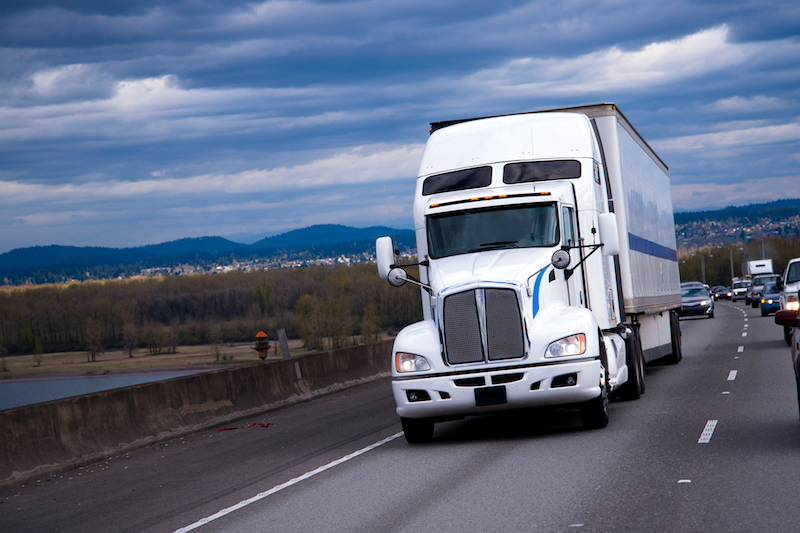How IoT and AI are helping keep truck drivers safe
Truck safety is a major focus for the trucking industry. Now there is artificial intelligence that can make a real-time difference in lives, money and on-road safety.

vitpho, Getty Images/iStockphoto
A truck fleet accident costs an average of $16,500 in damages and $57,500 in injury-related costs for a total of $74,000. “This does not include a broad range of ‘hidden’ costs, including reduced vehicle value (typically anywhere from $500 to $2,000), higher insurance premium, legal fees, driver turnover (the average driver replacement cost = $8,200), lost employee time, lost vehicle-use time, administrative burden, reduced employee morale and bad publicity,” said Yoav Banin, chief product officer at Nauto, which provides artificial intelligence driver and fleet performance solutions.
SEE: Edge computing adoption to increase through 2026; organizations cautious about adding 5G to the mix (TechRepublic Premium)
Emphasis on truck driving safety is well placed, considering other challenges that the trucking industry is facing.
Ranking first is a chronic shortage of truck drivers nationwide that could force fleet operators to hire less-experienced drivers who require operator and safety training. Driver compensation and truck parking ranked second and third, but immediately behind them in fourth and fifth position were driver truck fleet safety and insurance availability, which depends on safe driving records.
Historically, fleet operators managed safety risks with training programs, manual coaching sessions and manager ride-alongs with drivers.
“All of these were manual approaches, like one-on-one coaching that didn’t scale and were completely hit-or-miss when it came to identifying risky drivers and risky driving behaviors,” Banin said. “They often measured the act of being coached rather than the actual driving outcomes that resulted from that coaching session.”
Then, in the early 2000s, fleet managers looked for an alternate approach that would be more effective. They began to introduce telematics that used Internet of Things sensing and recording devices. These IoT devices automatically measured characteristics of driving based on vehicle motion such as speed, acceleration and braking, and reported that data to centralized databases and applications in the corporate office.
SEE: Future of farming: AI, IoT, drones, and more (free PDF) (TechRepublic)
Telematics propelled by IoT produced more data and automation, but a picture of what was really happening on the highway was still elusive.
Banin gave the example of a hard-braking event, which would normally be considered a negative in a telematics system.
“Instead, the event may actually be a result of excellent defensive driving that helped avoid an accident,” Banin said. “Telematics and IoT do a good job of understanding vehicle state, fuel usage and surfacing potential maintenance issues that may introduce risk. The problem is, they can’t really tell us what the leading causes of accidents are.”
The missing ingredient was analytics. As fleet managers realized this, they began to augment telematics and IoT with AI and computer vision. AI, and also more big data technology like computer vision, gave fleet managers the more complete and comprehensive picture of driver safety and road conditions that they had been looking for.
“In addition to providing warnings and insights on potential collisions based on vehicle dynamics, the most advanced predictive safety systems are now able to understand the driver’s state and behaviors such as distraction, drowsiness, cell phone use, holding objects, smoking and more,” Banin said. “With that understanding, it becomes possible to provide the extra warning time needed for a distracted driver to regain attention and then take preventive action to avoid a collision.”
Today’s real-time road-and-driver assessments are now widely enabled by AI technology like deep learning neural networks, on-camera sensors and GPS. As soon as a risk is detected, the technology issues alerts to the driver, which Banin says can reduce collisions by 50-80%.
For fleet managers, increasingly sophisticated driver scoring models coupled with relevant analytic reports on items like risky drivers, top-performing drivers, collisions and coaching effectiveness all help to improve safety and reduce risk.
“At the end of the day, it’s all about saving money and most importantly saving lives,” Banin said. “Predictive safety and analytics technologies are already helping fleets reduce collision losses, lower insurance premiums and prevent fatalities and injuries on the roads.”
Also see
For all the latest Technology News Click Here
For the latest news and updates, follow us on Google News.


